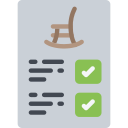Chosen theme: Understanding Pension Plan Options. Your future paycheck starts with today’s decisions. Explore how pensions, 401(k)s, IRAs, and annuities work together, and learn practical steps to turn choices into confidence. Subscribe and share your biggest pension question to guide our next deep dive.
Mapping the Pension Landscape
Defined benefit plans promise a formula-based monthly income and place investment risk on the sponsor. Defined contribution plans, like 401(k)s, grow based on your contributions, markets, and fees, placing growth and risk directly on you.
Traditional vs. Roth: Choosing When to Pay Taxes
Traditional contributions reduce taxable income today, but withdrawals are taxed later. Roth contributions use after-tax dollars now, offering potentially tax-free withdrawals. Blend both for flexibility if your future tax rate is uncertain or changing.
Employer Match and Vesting: Free Money with Strings
An employer match is powerful, often delivering instant returns if you contribute enough. Vesting schedules determine when matched funds become yours. Know the timeline before changing jobs to avoid inadvertently leaving money behind.

Lump Sum vs. Lifetime Annuity: Flexibility or Certainty
A lump sum offers control and legacy potential but demands disciplined investing and withdrawal planning. An annuity provides steady lifetime income with less management. Weigh health, longevity expectations, and risk tolerance before choosing either.
Single Life vs. Joint-and-Survivor: Protecting the People You Love
Single-life payments are higher but end with you. Joint-and-survivor options reduce monthly income now to protect a spouse later. Compare reductions, survivor percentages, and health histories to safeguard household stability across decades.
Withdrawal Rules, RMDs, and Guardrails That Keep You on Track
Understand required minimum distributions, early withdrawal penalties, and safe withdrawal frameworks. Setting guardrails helps you adjust spending in response to markets, preserving principal while coordinating pension income and Social Security effectively.
Rollovers Without Regret: Avoiding Taxes and Penalties
Use direct trustee-to-trustee rollovers to prevent withholding and accidental tax bills. Confirm account types and timelines, especially when moving from a former employer’s plan into an IRA or a new eligible employer plan.
Consolidation vs. Keeping Accounts Separate: Control and Costs
Consolidating simplifies oversight and may lower fees, but some employer plans offer unique protections or low-cost institutional funds. Evaluate investment options, creditor protections, and service quality before merging accounts into a single destination.
From 401(k) to IRA to New Plan: Knowing the Fine Print
Before transferring, confirm eligibility, waiting periods, and investment menus. Some plans restrict stable value funds or loan features after departure. Alignment with your broader pension plan options should drive every rollover decision you make.


A one percent fee can erode decades of compounding. Compare index and active funds, understand embedded trading costs, and choose low-cost, diversified options that preserve more of your hard-earned contributions for retirement income.

Recordkeeping and administrative fees may be charged to participants or offset by revenue sharing. Read disclosures, compare benchmarks, and ask plan sponsors questions. Transparent costs help you evaluate plan quality honestly and effectively.

Seek advisors obligated to act in your best interest, and scrutinize compensation structures. Beware confusing products pitched without context. Ask for clear explanations of risks, fees, and alternatives before changing your pension plan options.
Life Events, Protections, and Special Rules
Spousal Rights, Beneficiaries, and Paperwork That Truly Matters
Update beneficiaries after marriages, births, or losses. Many pensions require spousal consent for certain elections. A few forms completed today can prevent costly delays and protect loved ones when benefits are finally needed most.
Divorce, QDROs, and Splitting Plans Without Breaking Futures
A Qualified Domestic Relations Order can divide employer plans fairly while preserving tax advantages. Coordinate with attorneys and plan administrators, verify timelines, and confirm payout structures so both parties maintain viable retirement paths.
Disability, Early Withdrawals, and Avoiding Costly Mistakes
Hardship distributions and disability provisions exist, but trade-offs can permanently reduce retirement income. Explore loans, emergency funds, or policy riders first. Protect your future self by using pension plan options thoughtfully, not reactively.
Stories, Milestones, and Your Next Step
Maria’s Turnaround: How One Decision Rewrote a Retirement
At forty-eight, Maria increased contributions to capture her employer match and shifted to a lower-cost index fund lineup. Ten years later, her portfolio compounded steadily, giving her flexible pension payout choices and genuine confidence.
Age-Based Checklist: What to Do in Your 20s, 30s, 40s, 50s, and 60s
Start early with automatic contributions, increase savings when you earn raises, rebalance regularly, consider catch-ups at fifty, and prepare payout decisions before retirement. Each decade brings a focused move that strengthens pension plan options.
Tell Us Your Biggest Question: Join Our Community and Shape Future Guides
What confuses you most about pension plan options—taxes, investments, or payouts? Comment, subscribe, and request topics. Your questions shape our next articles, checklists, and deep dives, helping everyone plan with more clarity and courage.
